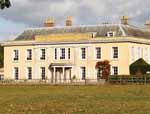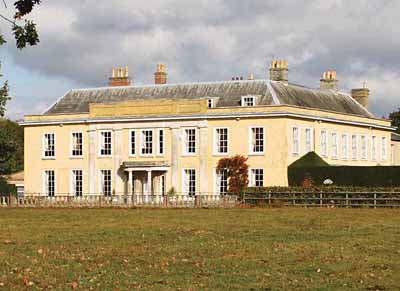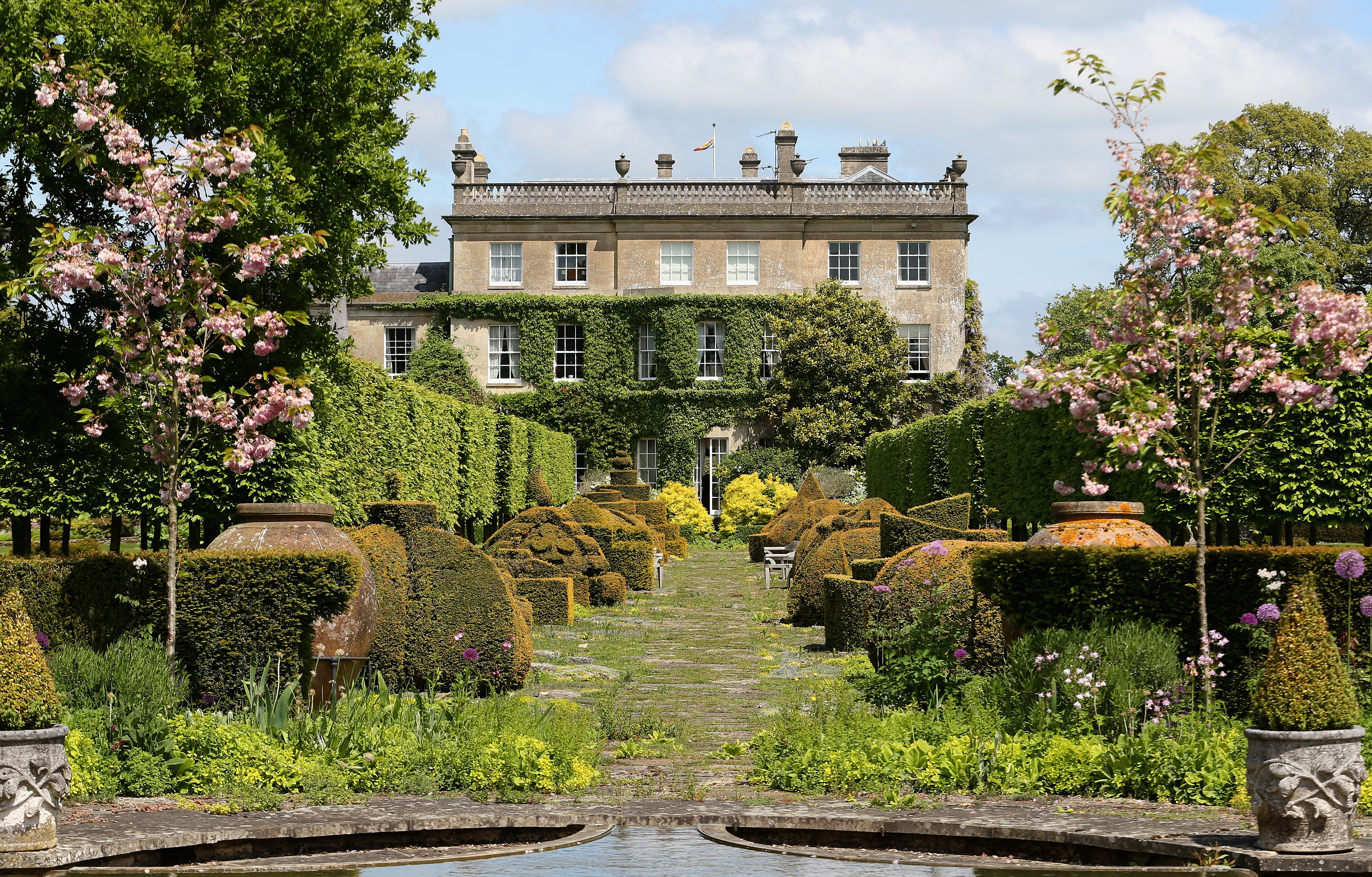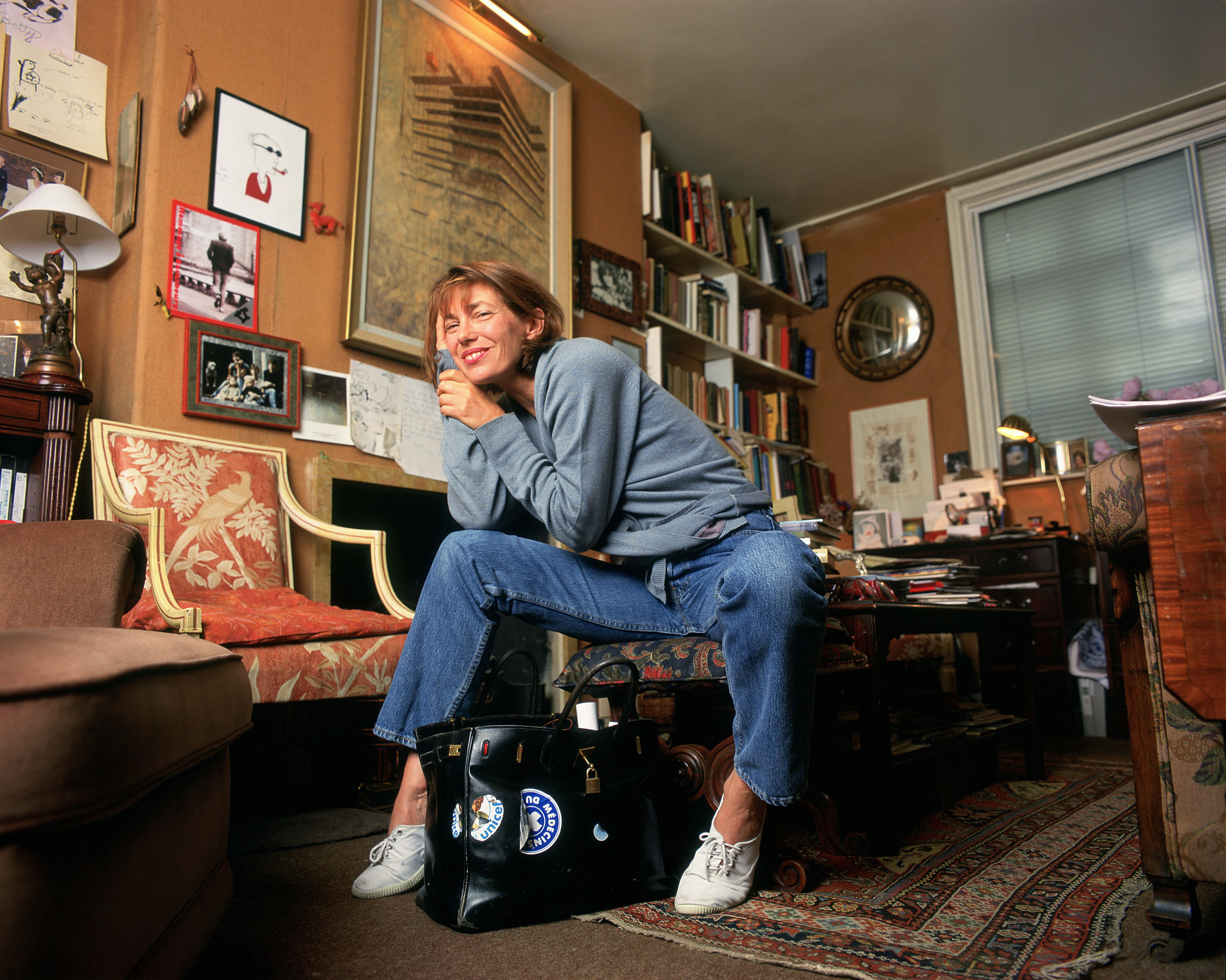Outstanding Suffolk country house for sale
An outstanding historic property, Worlinhgam Hall, in Suffolk is about to come onto the market


Next week's Country Life will see the launch onto the market of a rejuvenated Worlingham Hall near Beccles, Suffolk, at a guide price of £3.9 million through Savills in Norwich (01603 229229). Apart from a scholarly article penned 40 years ago by Marcus Binney (Country Life, March 12, 1970, surprisingly little has been written about this elegant, Grade I-listed, Georgian house, built in about 1800 and described by architecture expert Norman Scarfe in 1963 as ‘perhaps the most beautiful house of manageable size in Suffolk'. But Worlingham Hall is also ‘a contradiction within a contradiction', for the striking contrast between its sober, low-slung exterior and the exuberant charm of its interior, whose design is the stuff of an intriguing architectural whodunnit.
Discreetly hidden by 100 acres of park and ancient woodland, the hall stands on the site of a late-17th-century house built by John Felton, younger son of Sir Henry Felton, and described in 1735 as ‘a neat mansion, now the seat of Sir Thomas Robinson'. In 1755, the Worlingham estate was bought by Robert Sparrow for the princely sum of £3,850, passing on his death, 10 years later, to his son, also Robert Sparrow.
The young Sparrow attended King Edward VI School in Bury St Edmunds, where he acquired lifelong passions for classical literature and art, both of which are reflected in the layout of Worlingham Hall. Apart from a brief, unsuccessful foray into politics, Sparrow preferred to wield his influence locally, as a squire and magistrate-a man known for his ‘considerable talent', but also for being ‘haughty, imperious and selfish'.

In 1785, Sparrow decided to remodel his father's house, and commissioned the fashionable young architect John Soane, who had worked on several important houses near Worlingham, to draw up a set of plans. Eager to secure the commission, Soane produced no fewer than five sets of designs, one of which has survived and is now held at the Sir John's Soane Museum in London. His efforts produced no response from Sparrow, and still nothing had been done when, three years later, Soane sent in his bill. This was also ignored, and it was only in 1796, 11 years after he received the drawings and despite threats of litigation, that Sparrow eventually settled the account.
In about 1800, Sparrow finally commissioned local architect Francis Sandys, the builder of Ickworth Hall (now owned by the National Trust), to submit fresh plans. In many ways, his design for Worlingham, where a simple external design contrasts with the considerable richness of the interior, echoes that of another of Sandys' great country-house commissions, Great Finborough Hall in Suffolk. But many eminent architectural historians, including Mr Binney, believe that Sandys was persuaded to incorporate a number of Soane's original ideas-notably in the the extraordinary octagonal staircase hall, the library with its bowed sides and shallow segmented ceilings, and the picture gallery, recently restored by the current owners.
Robert Sparrow died in March 1822, aged 81, leaving Worlingham to the Earl of Gosford, who had married his only daughter. The 2,800-acre estate was eventually sold at auction by the 3rd Earl of Gosford in August 1849. It passed through the hands of various members of the gentry before being gradually broken up and sold off, and the main house fell into a state of progressive decay.
The last time I saw Worling-ham Hall was on a blistering summer day in the mid 1990s, when the house was being sold by Strutt & Parker on behalf of Viscount Colville, who had bought it in a state of disrepair in 1962. It was a brave undertaking for a young man in his early twenties, but over the years, he gradually restored the crumbling fabric, doing much of the interior decoration himself. At that time, the house stood in only 20 acres of land, the rest of Sparrow's original park being held by various owners, whose boundaries came perilously close to the main buildings.
Sign up for the Country Life Newsletter
Exquisite houses, the beauty of Nature, and how to get the most from your life, straight to your inbox.
Worlingham was bought in the late 1990s by Martin and Debbie Robertson-Bond, who embarked on a major renovation, before selling it three years later to the current owners, Richard and Fiona Nourse. Even seen in driving sleet and rain on one of the coldest days of the winter, for all its classic splendour, Worlingham is still a wonderfully warm and friendly house.
Robert Sparrow may have been a tricky character, but he must also have had a sense of humour, judging by the numerous quirky details scattered throughout his house, which reverted to its original shape and layout when Viscount Colville demolished the Edwardian service wing. As Marcus Binney points out, the ingenuity of Worlingham's design is ‘the masterly way in which changes of axis and level are concealed'-changes due mainly to its conversion from the previous 17th-century house. Octagonal halls were a common enough feature of Palladian houses, but none can quite match the impact of Worlingham's soaring staircase hall, which is the focal point of the house.
Another unusual aspect of the design is the way in which the back (possibly earlier) staircase opens onto the main one, breaking the usual strict division between family and service quarters. Huge sash windows flood the main reception rooms with light, especially the morning room and dining room, which are tall, classically proportioned rooms. On the other side of the hall, the drawing room and library are noticeably lower.
The library, where Sparrow housed his extensive book collection, partly inherited from Oliver St John, Cromwell's attorney general, is a charming and most unusual room, whose design, say the experts, is particularly reminiscent of Soane's work. Upstairs, the height/light balance is achieved by siting the main bedrooms above the library and drawing room, and the lesser ones-which include a delightful former sitting room with a distinctive Wedgwood frieze-above the morning room and dining room. In all, Worlingham has eight main bedrooms, including master and four guest suites, three further bedrooms, a family bathroom and a nanny flat, as well as extensive second-floor attics-several still to be converted.
Apart from enjoying every inch and aspect of the house, and restoring the picture gallery, built to house Sparrow's impressive collection of paintings and more recently used as a squash-court, the Nourses' most significant achievement has been the purchase of the surrounding parkland, which reinstates the hall in its original setting. Other notable improvements have been the installation of several new bathrooms, the refurbishment of the stable and garage courtyard and three cottages, and the creation of private garden areas around the house and swimming pool.
Included in the £3.9m sale price, but available separately at a guide price of £500,000, is Worlingham Court, a substantial single-storey, four-bedroom house with some five acres of grounds, which sits quietly on its own at the far end of the park. Also included is a small mooring on the River Waveney, which connects with the Norfolk Broads. Commenting on the sale, an upbeat Louis de Soissons of Savills points out that, ‘apart from two major estate sales in 2008, nothing of the quality of Worlingham Hall has been seen on the market in this part of East Anglia this side of the millennium'.
* For more properties like this every week, subscribe and save
Country Life is unlike any other magazine: the only glossy weekly on the newsstand and the only magazine that has been guest-edited by HRH The King not once, but twice. It is a celebration of modern rural life and all its diverse joys and pleasures — that was first published in Queen Victoria's Diamond Jubilee year. Our eclectic mixture of witty and informative content — from the most up-to-date property news and commentary and a coveted glimpse inside some of the UK's best houses and gardens, to gardening, the arts and interior design, written by experts in their field — still cannot be found in print or online, anywhere else.
-
 Sanderson's new collection is inspired by The King's pride and joy — his Gloucestershire garden
Sanderson's new collection is inspired by The King's pride and joy — his Gloucestershire gardenDesigners from Sanderson have immersed themselves in The King's garden at Highgrove to create a new collection of fabric and wallpaper which celebrates his long-standing dedication to Nature and biodiversity.
By Arabella Youens Published
-
 The coveted Hermès Birkin bag is a safer investment than gold — and several rare editions are being auctioned off by Christie’s
The coveted Hermès Birkin bag is a safer investment than gold — and several rare editions are being auctioned off by Christie’sThere are only 200,000 Birkin bags in circulation which has helped push prices of second-hand ones up.
By Lotte Brundle Published
